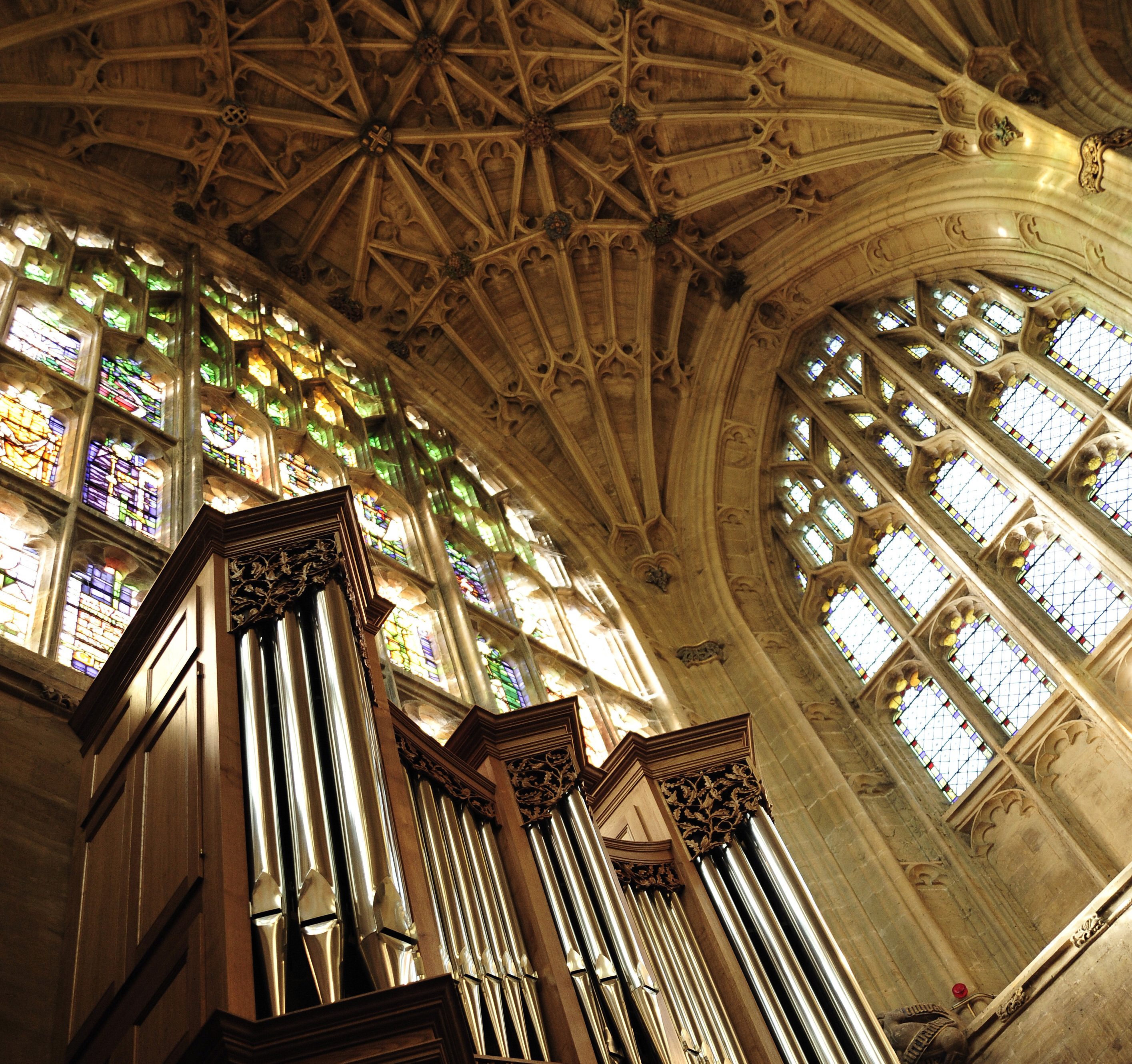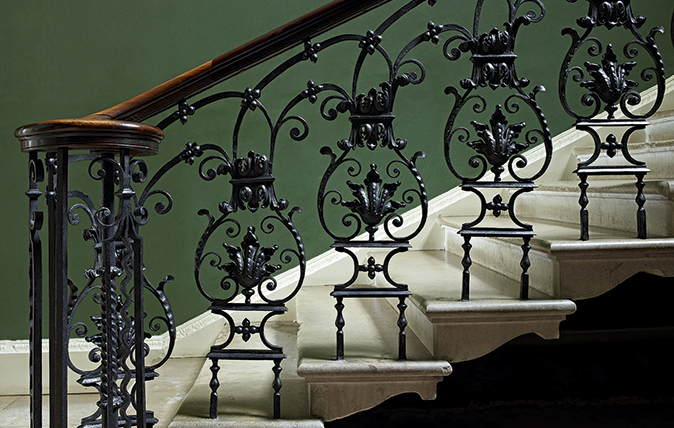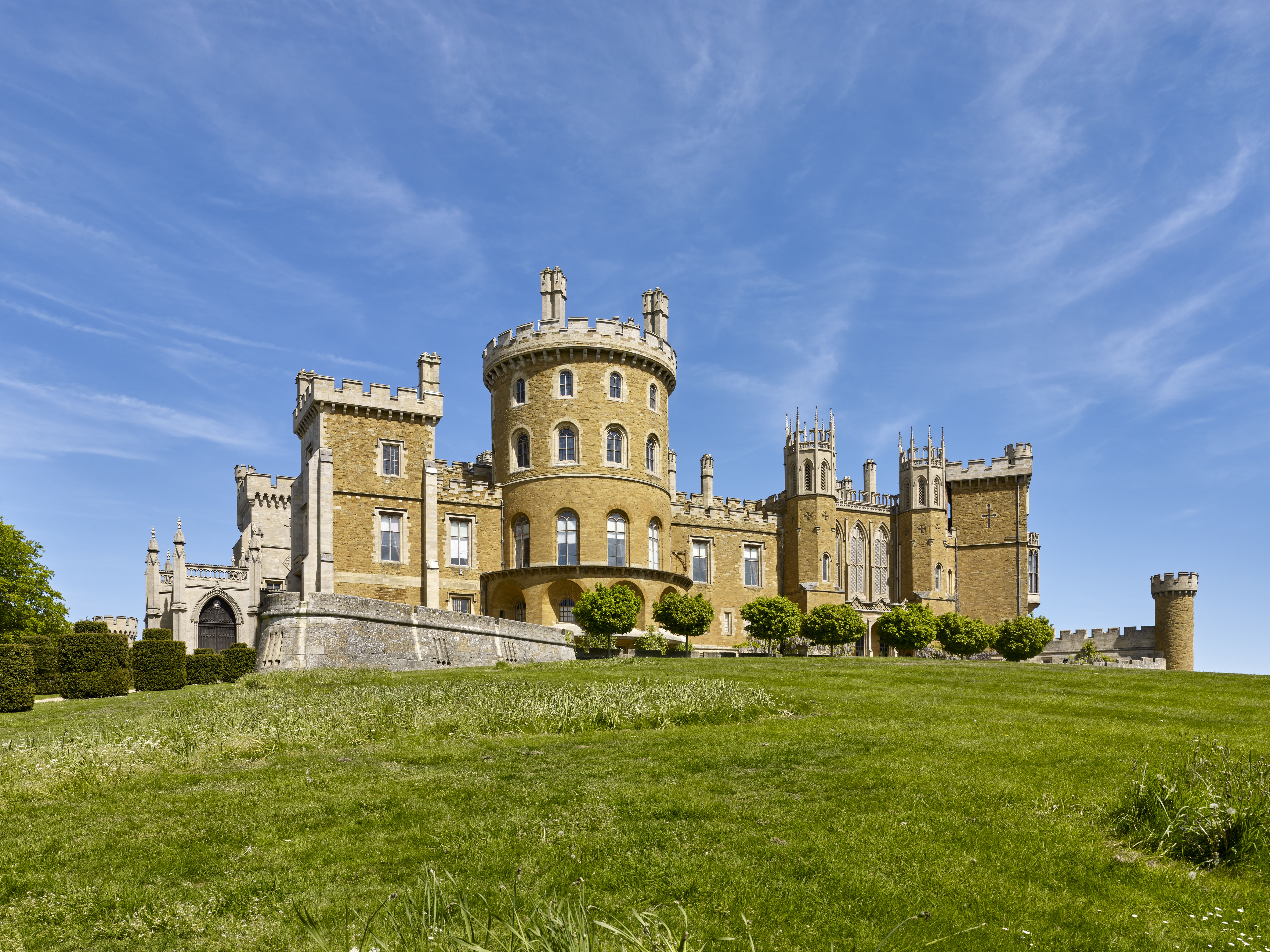Sherborne Abbey's stained glass: The spectacular Victorian addition to a building with 1300 years of history
The spectacular stained glass at Sherborne Abbey is only part of what makes this building one of the grandest in England, as John Goodall explains.


Every Tuesday afternoon, we delve into the Country Life archives to find something special from the magazine's illustrious past. This week, we look back at the 2013 Christmas special issue, in which our architecture editor John Goodall explained the history of Sherborne Abbey.
'In 705, Sherborne had been chosen by King Ine as the seat of a vast bishopric that extended across the modern counties of Cornwall, Devon, Dorset, Somerset, Wiltshire and Berkshire. From 909, the see underwent the first of several transformations when it was subdivided by the foundation of a cathedral at Wells,' wrote John.
'Under its founding bishop, St Aldhelm, Sherborne was served by a community of priests or canons, but, in about 990, one of his successors, Wulfsin (or Wulfsige), re-formed the community as a Benedictine monastery. Soon after Wulfsin’s death in 1001, miracles were reported at his tomb and Bishop Aelfwold (1045–58) created a great new church as an appropriate setting for his predecessor’s relics.'
That church was re-developed by Bishop Roger (1103–39), Justiciar of England and Chancellor of Henry I, who was clearly impressed by what was there before. 'There could be no more powerful testimony to the grandeur of the Anglo-Saxon church than the fact that Roger did not raze it to the ground (the usual approach of Norman rebuilders),' wrote John.

The full article explains more of the machinations following the building's history, from the day in 1437 when it was burnt down by local residents and how it survived the Dissolution. On this page, however, we're focusing on what it looks like inside as it stands today — a story which John expanded upon in the final section of his piece:
In its present form, the interior was shaped by a series of restoration campaigns launched in 1848 and absorbing an estimated £36,000 over the subsequent 40 years. A fundraising campaign instigated by the vicar, Rev John Parsons, and supported by the enormously rich Earl Digby permitted the restoration of the nave and transepts under the direction of R. C. Carpenter.Earl Digby died in 1856, but, the choir was restored in his memory by W. Slater, a pupil and partner of Carpenter, at the expense of his nephew and heir George Digby Wingfield-Baker. This project culminated in the creation of a spectacular decorative scheme that includes a cycle of stained glass by Clayton and Bell: a Passion cycle in the east window and a huge array of saints, bishops and kings in the clerestorey windows.Stained glass at Sherborne Abbey. Credit: Dr John Crook/Country LifeAcross the walls and vault extends a complex scheme of painted decoration executed by J. G. Crace. Laid before the high altar are three memorial brasses made by Waller of London, one to the Earl and two to his distant forebears. Finally, in 1884–85, the tower was again restored.Further changes have followed in the 20th century. The medieval Lady Chapel fell out of use at the Dissolution and was partly rebuilt as a war memorial in 1921 by W. D. Caröe. More recently, another major restoration campaign was brought to successful completion in 1983.Among its modern curiosities, Sherborne has the heaviest eightbell peel in the world and includes one recast bell reputedly given by Cardinal Wolsey. Its inscription runs: ‘By Wolsey’s gift I measure time for all/To mirth, to grief, to church I serve to call.’There is also a fire bell dated 1653: ‘Lord quench the furious flame/aris, run, help put out the same.’ In the light of history, the legend could be read as a collective pledge of the parishioners to cherish the abbey — as they clearly do — and not to burn it down again.
John Goodall's full article, was published in Country Life on December 2013.

Curves and curlicues: 10 stunning staircases from the Country Life Archive
Iron can be wrought into the most delightful staircase balustrades. John Goodall chooses some favourites from Country Life’s outstanding archive.
Exquisite houses, the beauty of Nature, and how to get the most from your life, straight to your inbox.

The oldest house in Britain — and how we were able to tell it apart from the other contenders
There are many nominations for the oldest home in Britain — in this piece from the Country Life archive, John Goodall

Belvoir Castle: From Norman conquest to Regency prodigy
New discoveries in the archives at Belvoir are fleshing out the history of this outstanding castle. John Goodall delves into

John spent his childhood in Kenya, Germany, India and Yorkshire before joining Country Life in 2007, via the University of Durham. Known for his irrepressible love of castles and the Frozen soundtrack, and a laugh that lights up the lives of those around him, John also moonlights as a walking encyclopedia and is the author of several books.